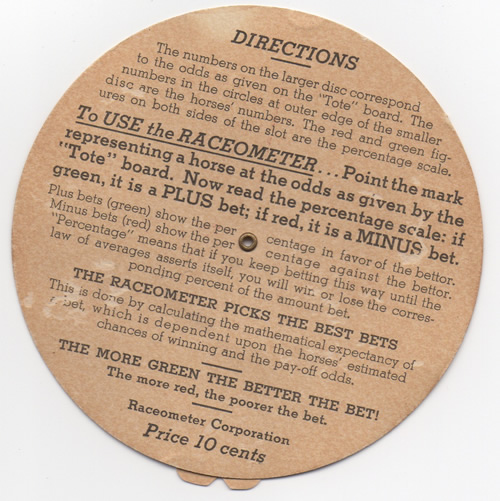Tools of the Trade
Bill Christine’s search for a Kelco put me in mind of my favorite piece of handicapping ephemera, a volvelle for assessing value called the Raceometer:

“The more green the better the bet!” Handy, but at 10 cents a race, pricey.

I’ve been on the lookout for more Raceometers, but all I’ve found so far is a similarly named wheel chart, the Race-o’Meter (note the odd apostrophe), produced by the Southern California Research Company in 1948:

Unlike the Raceometer, a tool for betting, the Race-o’Meter considers eight factors to create individual horse ratings. “Be sure you have a racing form before you when use you the Race-o’Meter,” advises the instructions:

It’s science! Beginning in the 1930s and continuing into the 1970s, “scientific” and “scientifically” were favored adjectives of marketers hawking handicapping systems and methods. In 1933, as defined in “Systology: The Science of Wagering Upon Horse Races,” a compendium of eight chart-heavy betting systems, “scientific” meant the complete eradication of individual judgment. “By the use of ‘Systology,’ the human equation is removed from wagering,” wrote the authors. “It leaves nothing to the imagination.” (How dull.) In 1961, “Science in Betting” assured its readers that it would tout no “miraculous betting-system,” instead, it would teach bettors how to use “scientifically collected” data, “which if applied intelligently can work consistently and accurately.” Just like the Race-o’Meter claimed, and most likely, the Kelco.
9 Comments